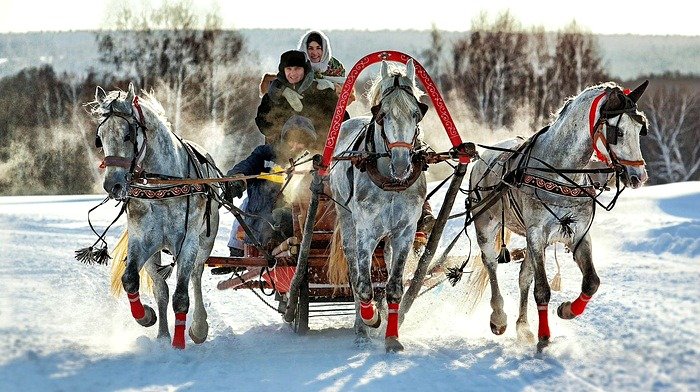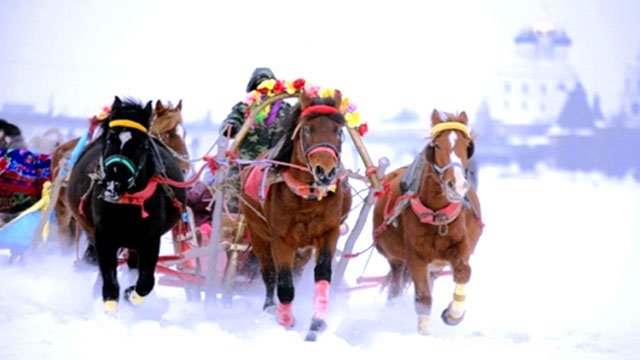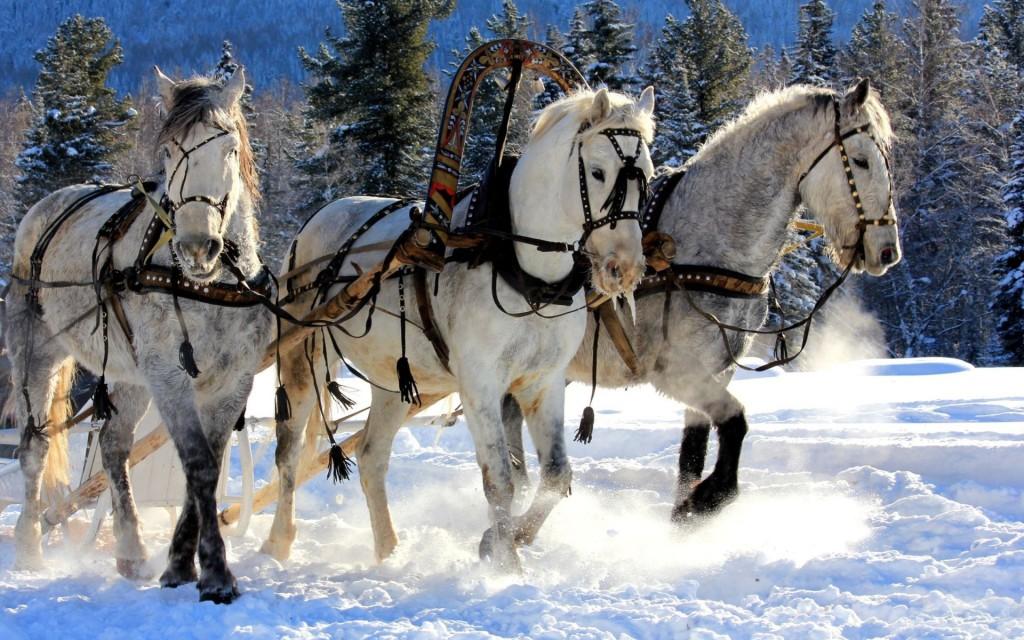
A troika coming at you at full pelt might just be one of the most terrifying sights you’ll see during a Russian winter, but unless you’re planning to race, you’re unlikely to come to any harm. Most troika rides happen at a much more leisurely pace and are one of the most popular activities among tourists taking a winter break in Russia.
What’s a troika?
The word comes from triplet or trio and refers to the typical combination of three horses harnessed to a sleigh. The two flanking horses are driven, usually at a canter, while the middle horse will only have to trot to keep up. The skill involved in driving a troika takes years to perfect, so as a tourist you’ll be a passenger. Guiding the horses, which themselves might train for up to ten years before they’re considered perfectly coordinated, takes lots of practice due to the need to manage multiple sets of reins in one go. It’s physical work and drivers need to be fit, so it’s rare to find an old troika driver. Traditionally it was a highly valued profession, passed down through the generations – and not just because coachmen were exempt from paying certain taxes!
An important part of Russian history
Originally the troika was developed to cope with Russia’s roads which in the 17th and 18th century were in a poor state of repair, the three horses providing more stability than would a traditional carriage set up. They were used to carry the mail, though as trains took over, they were relegated to more of a ceremonial role in weddings and festivals. Races were held at icy meets, with troikas judged on speed or style. Today, the image of a troika is seen where the country’s folklore takes centre stage; in film, art and literature, they’ve played an important role.
Know your duga

In Russia, as well as Finland and the Baltic States, troikas feature a duga or shaft bow. It usually takes the form of an arc above the middle horse which attaches to the wooden shafts found on either side of the horse. It’s sprung, thus reducing the knocks the animal might otherwise receive on a bumpy trail. The duga is also brightly painted and together with the harness decorations, bells and rosettes, combines to enhance the troika’s aesthetic qualities. Those bells had a more practical purpose too – as troikas often travelled at high speed, horses wore up to a hundred bells so people could hear them coming and get out of the way.
Not just any horse
Poise, posture and stamina are just some of the key traits required from the horses selected to pull Russian troikas. The duga horse needs to be slightly taller than the pair which flank him. He needs a good stride, as he will be trotting while the others canter, and he also needs to be calm in temperament, acting as the horse which grounds the team. The horses that take the outside positions are kept to a particular side according to which is their leading hoof. Different types of horse were considered too. One breed that ticked all the boxes was the Orlov Trotter, which perfectly matched the characteristics needed by the troika drivers.

Troikas remain a popular activity with tourists, even in summer, but the sight of a sleigh being drawn through the snow in winter is surely the quintessentially Russian experience. You can experience a troika ride on our New Year tour to St. Petersburg and Moscow.
